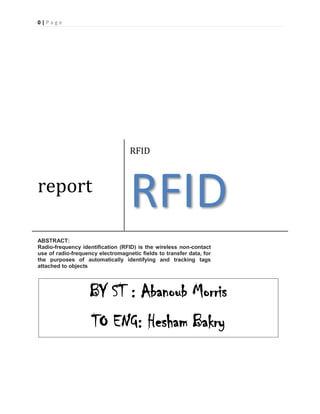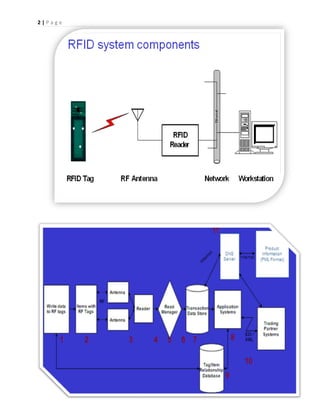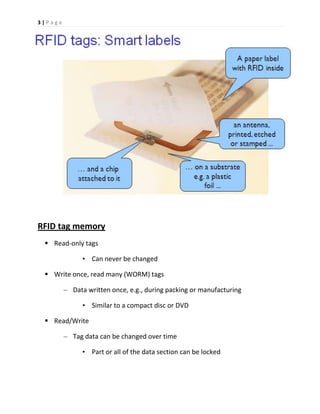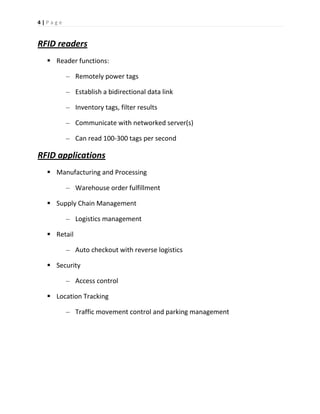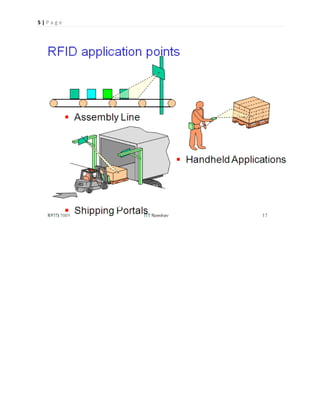Report
- 1. 0 | P a g e report RFID RFID ABSTRACT: Radio-frequency identification (RFID) is the wireless non-contact use of radio-frequency electromagnetic fields to transfer data, for the purposes of automatically identifying and tracking tags attached to objects BY ST : Abanoub Morris TO ENG: Hesham Bakry
- 2. 1 | P a g e Effect on manufacturing ï§ Need to ensure error-free, custom assembly ï§ Need inventory of components for the various customization options ï§ Critical Issues â Assembly process control â Inventory management â Supply chain integration â Customer insight ï§ One solution: RFID ï§ What is RFID? ï§ RFID = Radio Frequency IDentification. ï§ An ADC (Automated Data Collection) technology that: ï§ uses radio-frequency waves to transfer data between a reader and a movable item to identify, categorize, track.. ï§ Is fast and does not require physical sight or contact between reader/scanner and the tagged item. ï§ Performs the operation using low cost components. ï§ Attempts to provide unique identification and backend integration that allows for wide range of applications. ï§ Other ADC technologies: Bar codes, OCR
- 3. 2 | P a g e
- 4. 3 | P a g e RFID tag memory ï§ Read-only tags âĒ Can never be changed ï§ Write once, read many (WORM) tags â Data written once, e.g., during packing or manufacturing âĒ Similar to a compact disc or DVD ï§ Read/Write â Tag data can be changed over time âĒ Part or all of the data section can be locked
- 5. 4 | P a g e RFID readers ï§ Reader functions: â Remotely power tags â Establish a bidirectional data link â Inventory tags, filter results â Communicate with networked server(s) â Can read 100-300 tags per second RFID applications ï§ Manufacturing and Processing â Warehouse order fulfillment ï§ Supply Chain Management â Logistics management ï§ Retail â Auto checkout with reverse logistics ï§ Security â Access control ï§ Location Tracking â Traffic movement control and parking management
- 6. 5 | P a g e

